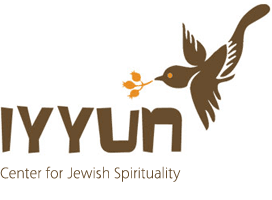How we relate to our Creator:
The Three Paths of Relationships:
1) I-You: Love. 2) I-Object: Awe. 3) I-I: Unification
In this essay we are going to explore three forms of relationships that we can have with the Creator, and their parallel Divine Names.
THREE DIVINE NAMES
There are three “Names†of G-d as described in the Torah:
- Elokim (×לקי×) — Divine Force manifest within Nature
- Hashem (ה–ו–ה–י) — Infinite, Transcendent Unity, Beyond Nature
- Ani (×× ×™) — I Am, Essence, beyond beyond, within within, beyond within, within beyond
1) Elokim (×לקי×) is connected with nature, creation, multiplicity, and time-space consciousness. In the Torah it is Elokim who creates the Heavens and the Earth; “In the beginning Elokim created the heavens and the earth.â€
The Hebrew word for ‘nature’, Ha’Teva, has the same numerical value as the name Elokim — 86. Elokim is associated with the attribute of Din, ‘Judgment’. This quality manifests within the Laws of Nature such as gravity and the cycles of life. Natural Laws are universal, indifferent, and unapproachable by humans seeking respite from their tyranny. If you touch fire, you get burned. If you are underwater too long, you drown. Elokim is plural indicating that it is through the creative process that multiplicity, as experienced in nature, is brought into reality. Elokim is the Divine Immanent, the aspect of the One that is always present within the many.Â
2) Hashem (ה–ו–ה–י) represents the Infinite aspect of G-d that is beyond nature. The four letters that comprise this Name, when rearranged, can spell the Hebrew words for past (היה), present (הוה), and future (יהיה), indicating that this name transcends all concepts of time. Hashem is associated with the attribute of Mercy. It is to Hashem that one directs their prayers for healing, salvation, help, or miraculous intervention. Hashem is understood as the Infinite aspect of G-d, but also paradoxically represents an approachable aspect of infinity. If nature is cold and indifferent to suffering, Hashem is personal and compassionate.
3) Ani (×× ×™), the third reality, is the ‘I am’ of G-d, so to speak. This is the unity between Elokim and Hashem, between nature and miracle, between time and eternity, between me and You — leaving only us, only One, only I, Ani. Not much can be said about Ani. Ani simply is — beyond distinction, description, or direction. It is to Ani that the psalmist directs the words “To You silence is praiseâ€. No description is sufficient because any attempt to describe Ani, even just saying “Infinity”, is, by definition, a limitation.
Ultimately, Ani is the equanimous backdrop, or fertile ground of being, upon which the dynamic interplay between Elokim (Nature) and Hashem (Spirit) manifests as reality, dream, existence or illusion — depending upon your perspective. But the main point is that Ani is both beyond and within all Names or attributes. Ani is transcendent as well as immanent, and also neither.
Â
THREE PATHS:
Experientially, these three paradigms are experienced as:
- Bitul Ha’Yesh — Humbling the Ego.
- Bitul Ha’Metziyut —Nullification of Ego.
- B’Chol Le’Vavcha – With all your Hearts, Transparency of Ego
1) Bitul Ha’Yesh
This is the spiritual work of aspiring to humble the Ego, otherwise known as the path of humility. During this point of the process, the small ‘i’ exists, yet one is working on refining it. The small ‘i’, or ego, can be compared to Pharaoh from the book of Shemot or ‘Exodus’: a vital and important aspect of a whole system which has fanatically seized control and seeks to project itself as the only valid authority. The work of Bitul ha Yesh is to empower one’s Soul to “speak truth to power†like Moshe did to Pharaoh. This initiates the attempt to liberate one’s life from the tyrannical grip of the over-inflated ego. At this stage, one is still functioning from a self-centered paradigm
—“iâ€â€”
2) Bitul Ha’Metziyut
This is the spiritual work of totally nullifying one’s ego. The goal of this work is for a person to function from a place of non-attachment and equanimity. From this perspective all stimulus, sensation, and scenario is seen as illusory and ultimately non-existent. Following the previously mentioned metaphor of the Exodus, this process can be compared to the Israelites leaving Egypt and entering into the wilderness. Psychologically speaking this is the process of deconditioning and deconstruction that is necessary to consciously recreate one’s own identity. This stage can be compared to a cosmic reset button. The small ‘i’ ceases to exist. It is a paradigm of only You, as ‘i’ no longer exist, so to speak.
—“Youâ€â€”
3) B’Chol Le’Vavcha
This phrase literally translates as, “With all your heartsâ€. This implies an integrated state of being in which both the “I†and the “You†are activated and acknowledged within a rectified consciousness, a transparency of ego. This refers to a state of consciousness in which both one’s creative and destructive impulses are enlisted in the spiritual efforts of an individual. Both one’s selfish, survival instinct as well as one’s selfless, spiritual intuition are united in the perpetual process of Deveikut, ‘Cleaving to the Divine’, and Tikkun, ‘Fixing or Repair’ of all that is broken or needs healing. From this perspective life is both Real and a Dream. Everything depends on one’s freewill, and it is all up to G-d. This requires an integration of one’s ego as well as their transcendent Self. The ego still exists, but it becomes transparent to one’s inherent transcendence. This is a paradigm of you and me; a recognition that we are all manifestations of the Ultimate I.
—“I and Iâ€â€”
Â
THREE WAYS TO RELATE TO THE CREATOR:
These three principles also illustrate our relationship with our Creator.
- I-You: Love
- I-It: Awe
- I-I: Unification
1) The first level is love. When one is in love, they feel themselves to be subsumed by something that is greater than themselves, but there is still a pronounced experience of the ‘I’. There is an I that loves. Implicit in the statement, “I love Youâ€, is that there is a strong sense of “I†consciousness. There is an “I†that is in love. When we are in love with, and feel loved by, the Creator we feel close, connected, and cradled. Yet, there is a clear me and a clear You, and I love You.
2) The second level in relationship with our Creator is awe. Awe is the evolution of love, which is an emotion that is ordinarily dependent upon some form of conditionality (i.e. what You do for Me). Awe manifests primarily as an experience of intoxicated appreciation for the Other in and of Itself. While we behold our Beloved in awe, our relationship becomes one of transcendence. Instead of an emotional experience that anchors one in their sense of self, awe is a form of love that liberates one from oneself. Awe is that overwhelming sensation of the majesty, wonder, and amazement at creation, matched with a humble recognition of our existential smallness within the vastness of all creation and it’s Creator. An “Aha! Momentâ€, or a Peak Experience, signals the total (but often temporary) disappearance of the small “Iâ€. There is a total collapse of the small-self and ego. We are completely absorbed by the ‘Other’. The possibility of wonder and radical amazement is present when we stand in awe before the mystery of all creation and the Creator.  The Holy Other is Infinitely beyond me, a mystery — an “Itâ€.
3) The third level transcends relationships altogether. Relationships, by definition, suggest duality and separation. Love and awe are both feelings. Feelings either draw us closer, as in love, or force us to stand back, as in awe. Yesh Amiti is beyond these conditional dynamics. Yet, at this integral level, Yesh Amiti, also includes all relationships and emotions, including love and awe. The Reality of Unity is where the small “i†becomes a conscious and co-creative reflection of the Ultimate I.Â
Â
After Adam and Eve ate from the Tree of Knowledge of Good and Evil — the Tree of Duality — they were exiled from the Garden of Eden, a paradigm of Unity. In the Torah’s description, following this episode, the verse states that the Creator “stationed two Cherubim east of the Garden of Eden, each with a revolving fiery sword, to guard the way to the Tree of Life†(Genesis, 3:22-24). The function of the Cherubim is to guard the path that leads to the Tree of Life. They are stationed at the gates of the Garden of Eden in order to intimidate us and scare us away from embarking upon such a spiritual journey. Paradoxically, the word Cherubim comes from the same root as Kiruv, ‘To bring close’. The two Cherubim and their fiery swords are there to both repel and attract us to a more holistic and holy way of being in the world.
Â
The two Cherubim represent Love and Awe. Indeed it is the elemental emotions of Love and Awe that propel us all the way up to the gates of the Garden of Eden. And yet to pass through the final gate in order to gain entry into a state of unity, all emotions must be seen through, surrendered, transcended, and on the deepest level — integrated within one’s fully realized self.
Â
(The above article is an excerpt from Rav DovBer Pinson’s book: The Garden of Paradox.to be released July 2012 – to see this and other books by Rav Pinson please click on the link below)
 Click Here to see all of Rav Pinson’s books
Â







